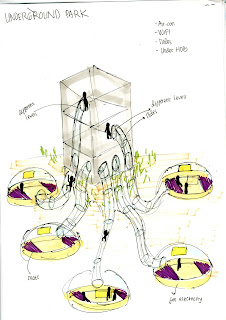Reflecting upon the past 14 weeks, not only I had a deeper understanding of the current issue in Singapore which is the limited land, I also developed a greater sense of empathy. Researching and investigating about the limited social spaces in residential areas in Singapore made me realise how oblivious I had been towards the current issue, which is happening right before my eyes.
At the beginning, when my group was assigned to this project, I had doubts about coming up with a solution to the problem as I thought that it was a rather difficult task. It was also probably because my perception was narrow. However, I was determined that my group members and I were capable of completing this task. I am glad that I was able to experience this project and coming up with a great solution with Samara and Irene. I couldn't have asked for better group members.
From this project, I strongly believe that there is no such thing as a dead end if you are open minded and not narrow down your perception of an idea. In other words, individuals are generally narrow-minded when given an assignment that is thought to be hard. This project has sharpened my individuality into becoming a better citizen. The knowledge that I have gained from this project can be applied to school and my assignments. One of my favourite approach is to think of ways that do not make sense as only then, new ideas would arise. Thus, creating something unique and out of this world. Hence, impracticality over practicality.















